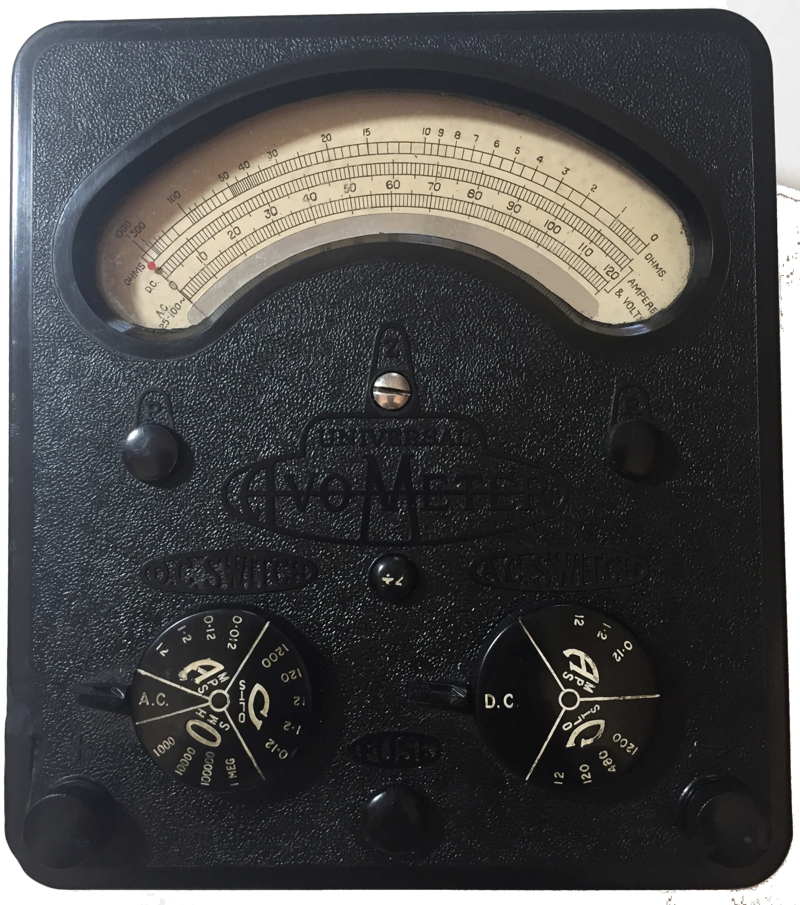
This AVOmeter
model, introduced in 1934 was a
development of the original AVO DC only multimeter which started life
back in
1923. Though
known for their Avometer general purpose multimeters, they made a wide
range of test gear including valve testers, oscillators and light
meters. You will find more information
here about these instruments and other similar models. AVO also produced a range of
smaller multimeters which are described
here.

This is an updated version of the short lived 34 range instrument introduced in 1933 with the added 480 V AC range (240 V when button pressed). The mechanical design is the forerunner of the later model 7 and model 40 series of meters.
DC 0.12, 1.2, 12, 120, 1200 volts - sensitivity 6/3 mA
DC 12, 120 mA, 1.2, 12 A
AC 12, 120, 480, 1200 volts
sensitivity: 6/3 mA on 120+ volts, 120/60 mA on 12 volts
AC 120 mA, 1.2, 12 A
R 1k, 10k ohm (12.5, 125 ohm center) with 1.5 volt
cell
100k, 1M ohm (1.25, 12.5k ohm center) with external power
(In fact = 7.5, 75 volt ranges, with no adjustment)
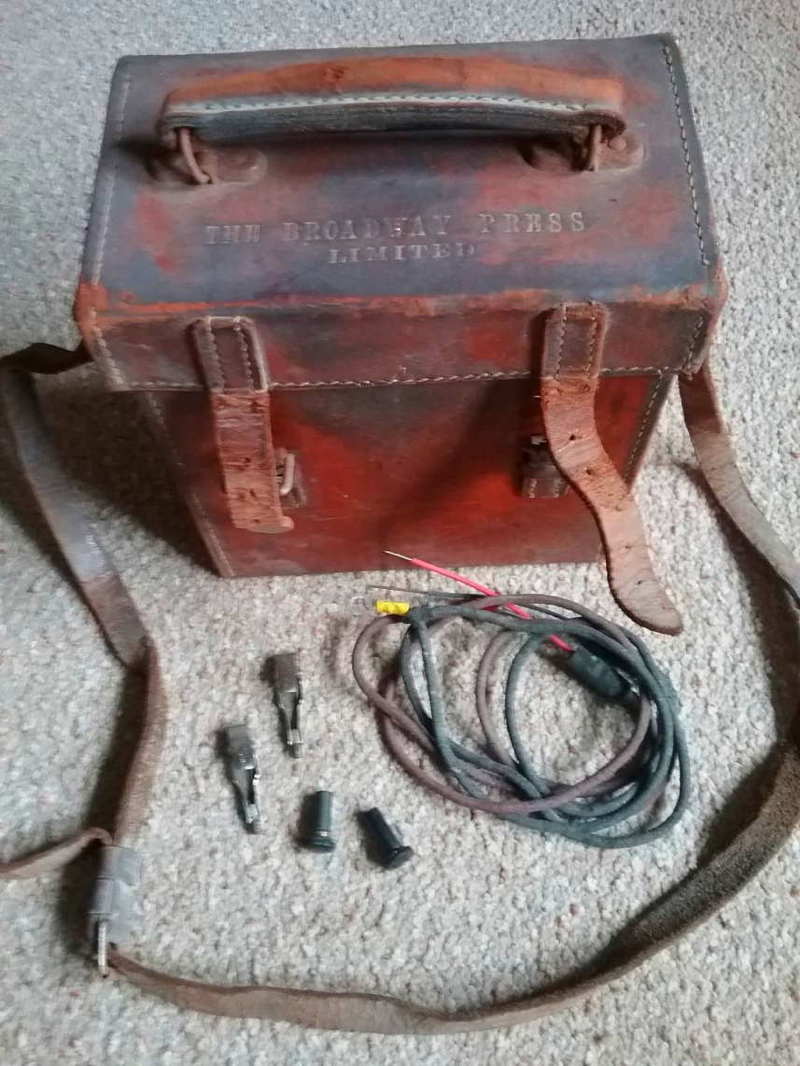
Meter case, leads and spare fuses as
received
When I acquired this model 5
serial
38-7445 it was in quite nice condition and came complete with leather
case and perished leads, probes and spare fuses. It had faults on the
highest voltage ranges AC and DC and two of the ohms ranges and all the
fuses were blown and shorted out. The
leather case was is almost identical to other genuine AVO ones I have
except it has green felt like lining and steel rather than brass
buckles and studs for the shoulder strap.
As received the instrument was in quite good condition though it
had
clearly been dropped at some time, there was a dent in yhe aluminium
case and the front panel was chipped adjacent to the left hand
terminal. The front panel was washed with floor cleaner and a tooth
brush
and the knob engravings filled with off white emulsion paint which was
rubbed off whilst still slightly damp. A light coating of oil brought
back a shine and more cared for look.
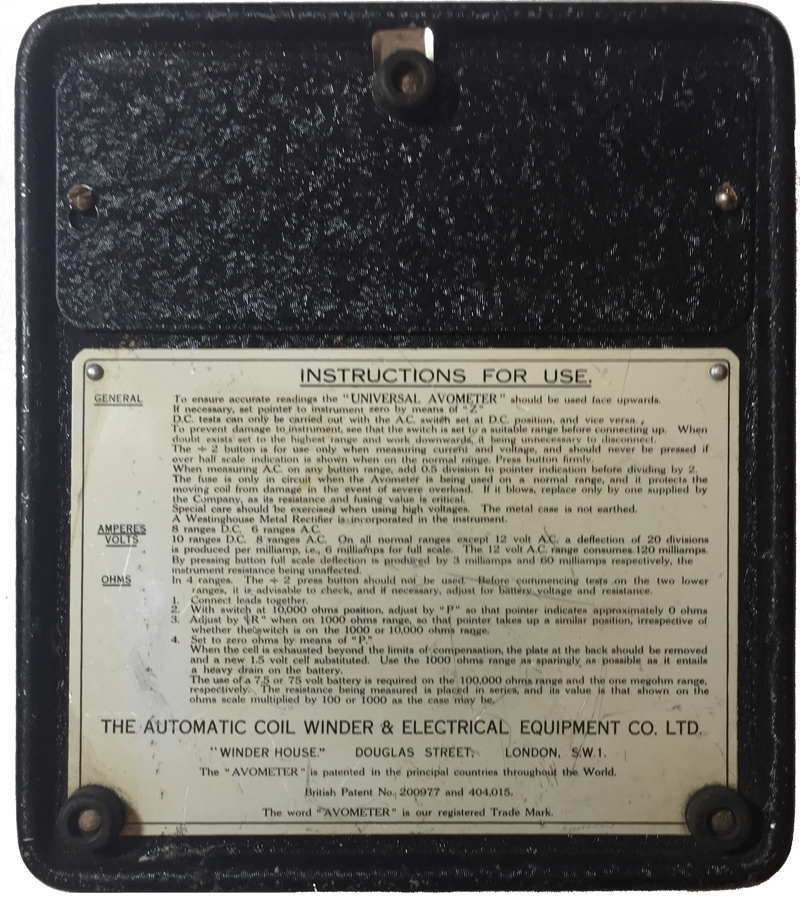
The
case appears original and lists 36 ranges. Unlike later meters the
anti-tamper screw is on the lower left hand side.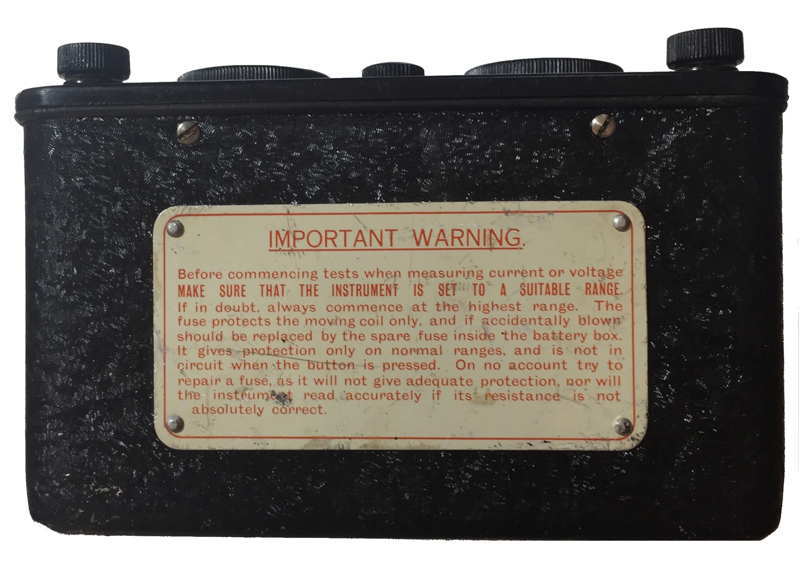
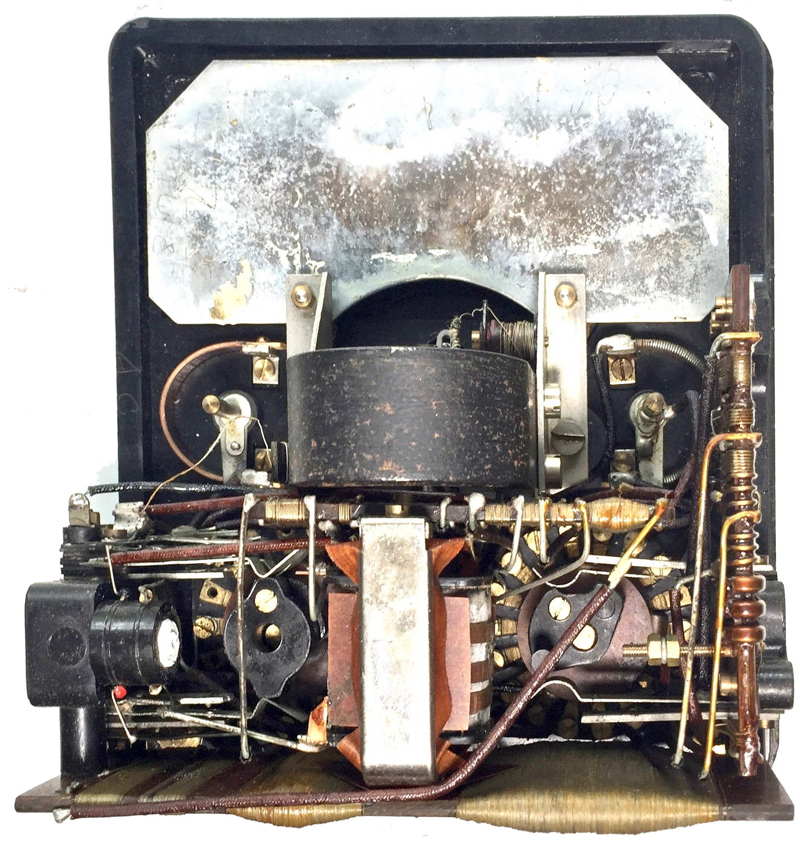
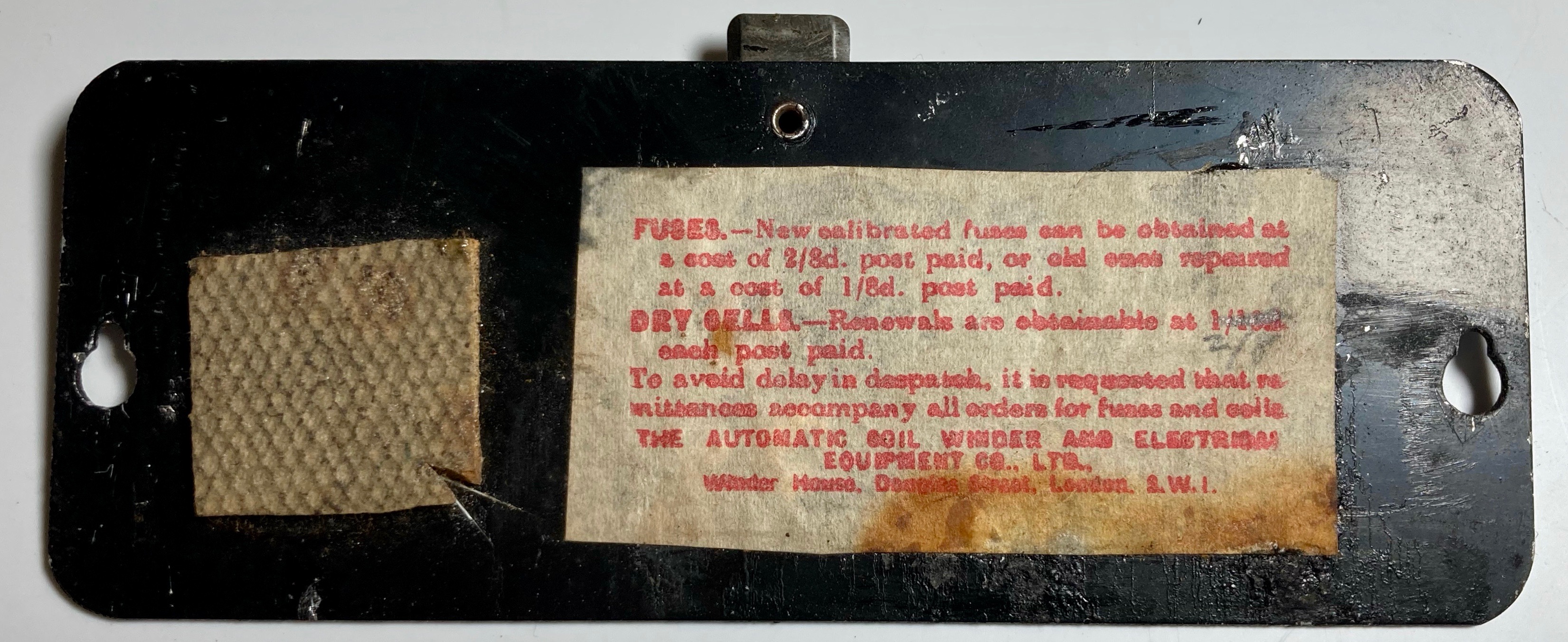
Faults When I removed the meter from the case I discovered an open circuit on one of the high value resistors and burnt out end turns on the R ohms adjuster, both now fixed. Fortunately with a magnifying glass I found the broken ends and after many attempts managed solder a piece of copper wire to join them up. I used an inch or so of wire from a 400 ohm resistance bobbin wrapped around one of the fuses to get about 4 ohms and found the meter was remarkably accurate, not bad for something made when I was a toddler!
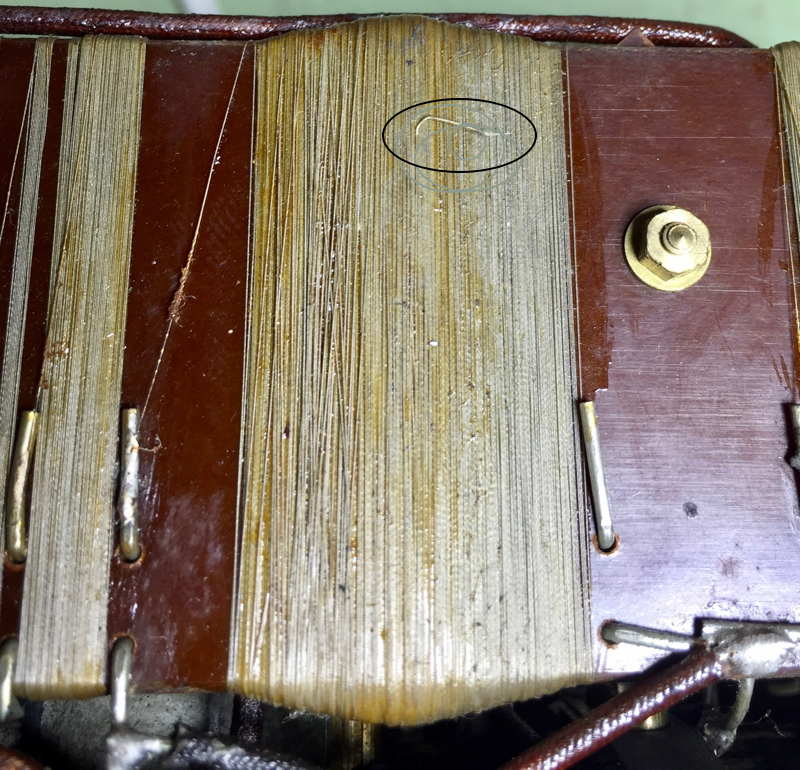
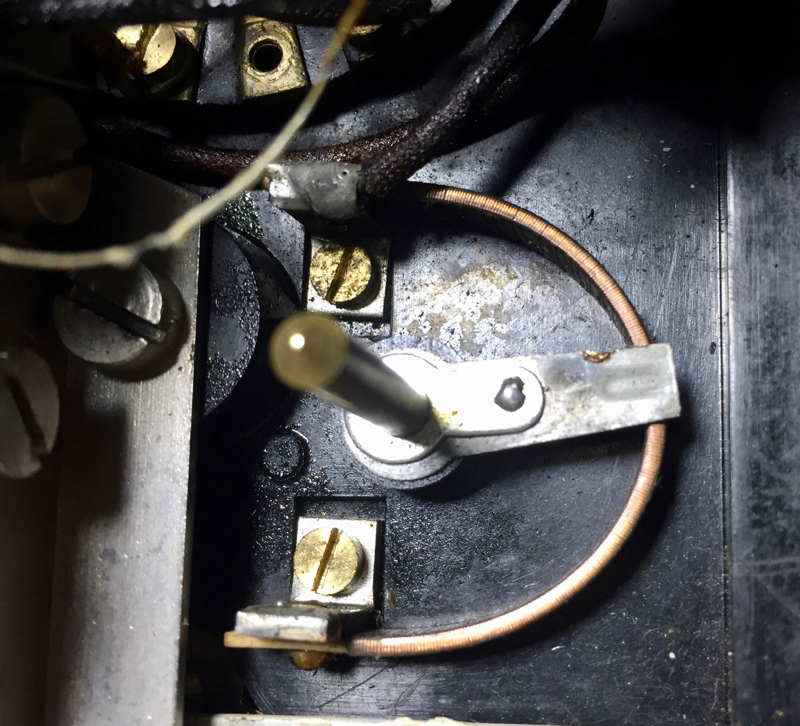
With this
meter it is important to return the two switches to the neutral
positions to avoid discharging the 1.5 Volt cell for the resistance
ranges, later models have additional contacts which avoid this problem.
Leads
The perished leads (shown in the second picture above) were cloth
covered and ended in a screwed (2BA) piece of brass rod into which the
probes or bulldog clips fit, the meter ends were terminated in Clix
hooks.
Fuses
The fuses have now been repaired, originally, two of these would
have been sold in boxes similar to this reproduction. If you look at
the label on the battery box cover you will see that a new fuse would
have cost 2s 8d which today (20210 would be over £9!


I made new leads from cloth covered rubber insulated flex.
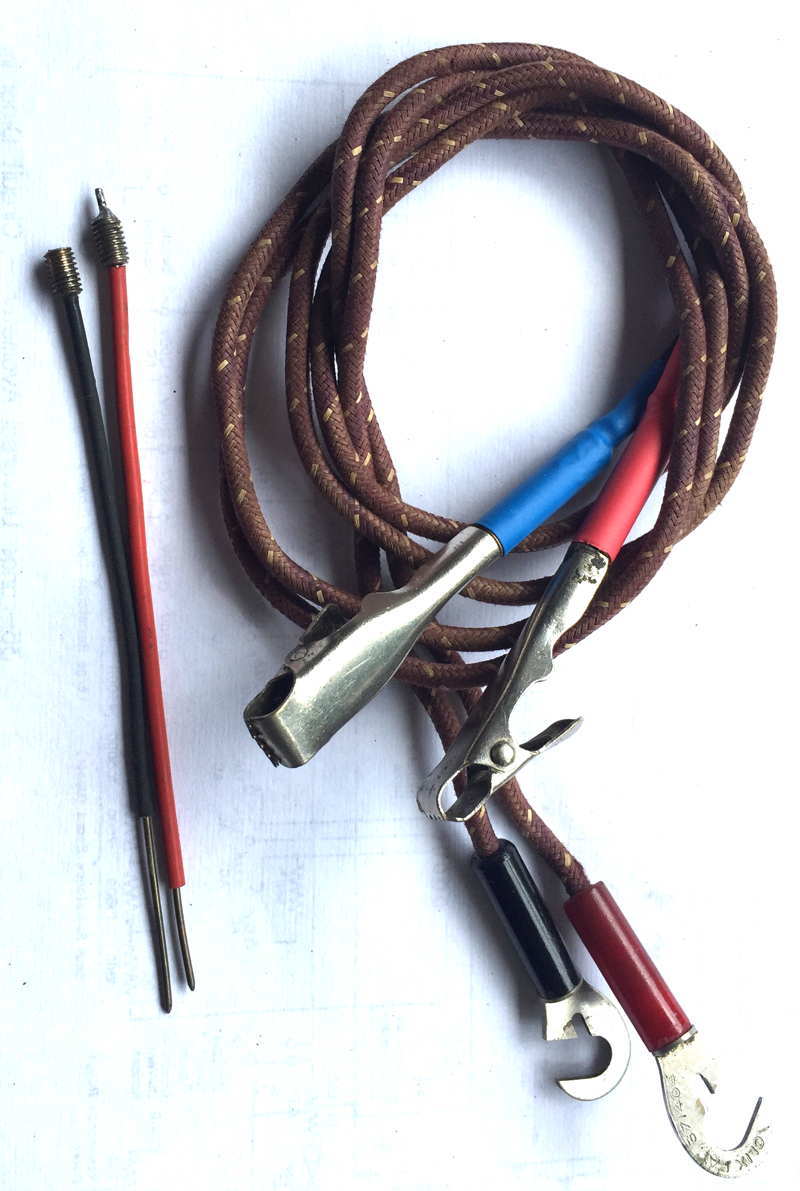
Battery This model used a rectangular 1.5 volt cell
with
a brass terminal and a flying lead for the negative connection.
Surprisingly AVO retained the casing design long after the rectangular
batteries were unavailable.
How old is it? Early AVO meters such as this made during the
1930's can be dated from the first (3
or 4
digits) of the serial number under the right hand end of the scale. For
example this one
was made in March 1938.
What is it worth? This model is fairly rare and might be worth £40 but is not much use today. The model 8 being more sensitive is a better investment, you should be able to buy a model 8 MkIII for the same amount which you will find equally as good as the later models which often sell for much more.
For further information have a look at my pages on the AVO
range of multimeters HERE

